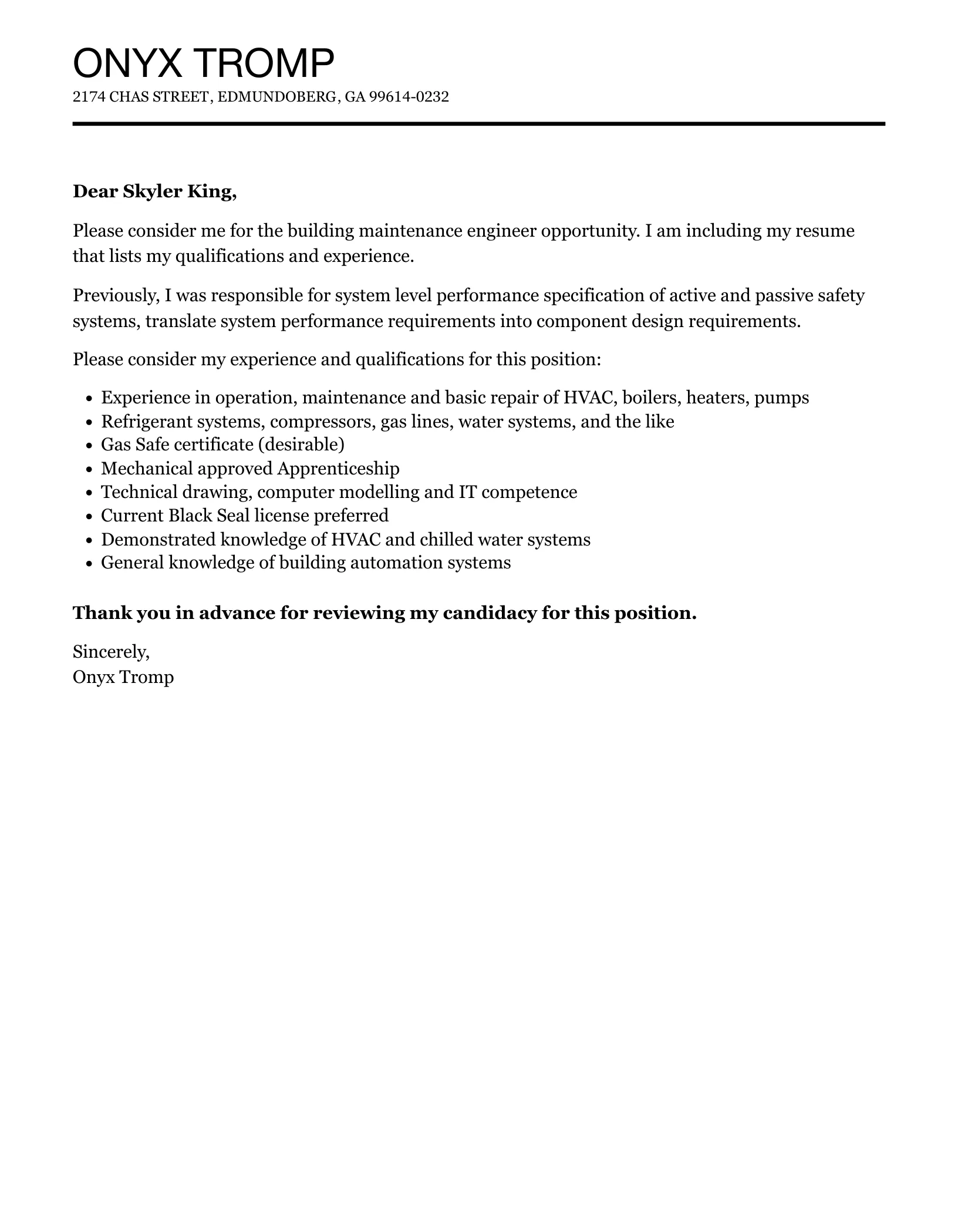Understanding the Building Maintenance Role
Building maintenance professionals are the unsung heroes of the built environment, ensuring that properties are safe, functional, and aesthetically pleasing. Their roles are incredibly diverse, ranging from routine inspections and minor repairs to managing complex systems and coordinating with external contractors. Understanding the scope of this role is the first step in showcasing your qualifications effectively in your cover letter. This understanding demonstrates that you are aware of the day-to-day activities and complexities associated with the role.
Key Responsibilities of a Building Maintenance Professional
The responsibilities of a building maintenance professional encompass a broad spectrum of tasks. They typically include performing routine inspections, conducting preventative maintenance, and repairing various systems such as plumbing, electrical, and HVAC. These professionals often handle carpentry work, painting, and other general repairs. A significant part of their job involves responding to maintenance requests from tenants or building occupants and ensuring that all repairs are completed efficiently and effectively. They are also responsible for maintaining detailed records of all maintenance activities and ensuring compliance with safety regulations.
Essential Skills for Building Maintenance
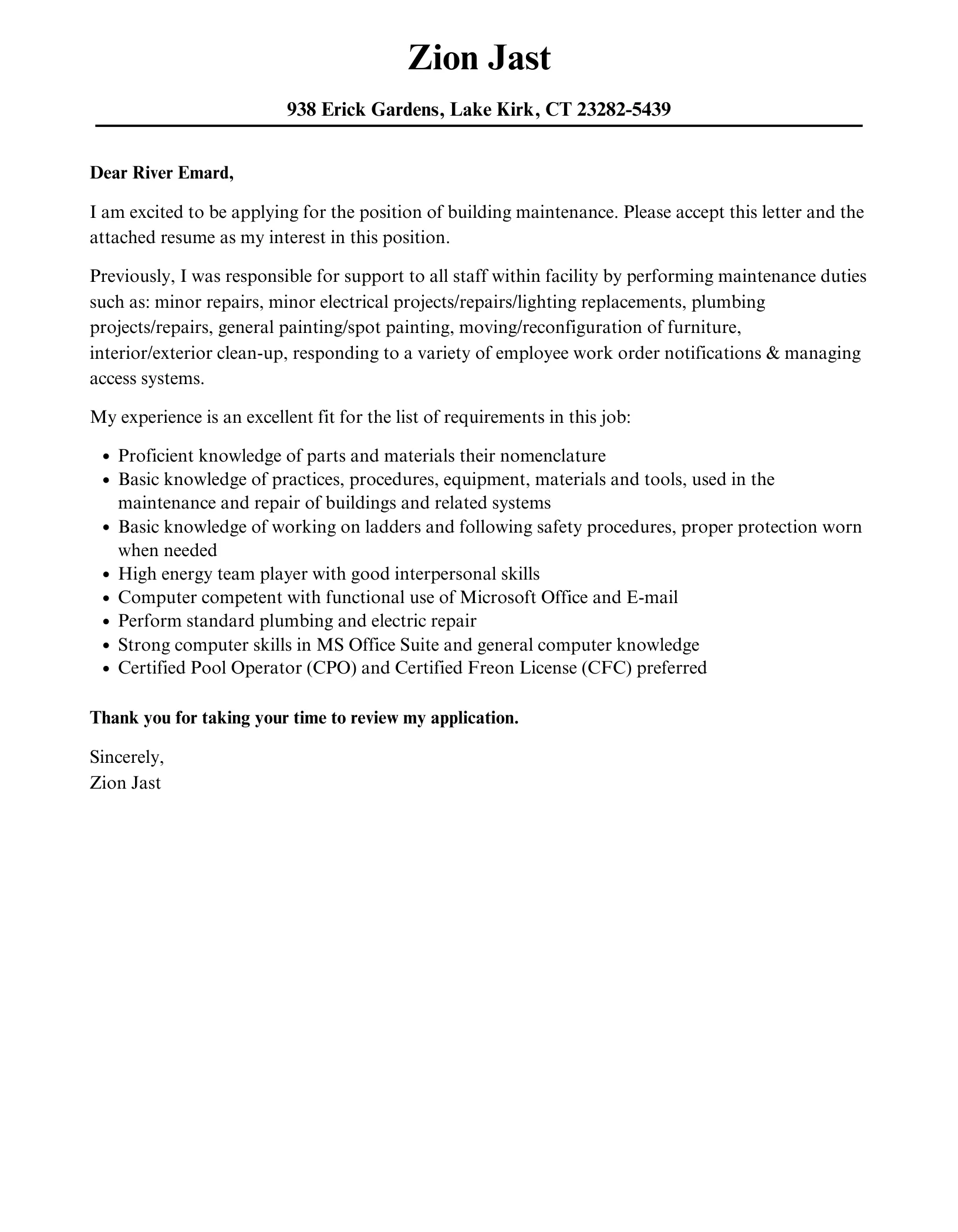
Building maintenance requires a blend of technical skills, problem-solving abilities, and interpersonal skills. Technical proficiency in areas such as electrical, plumbing, carpentry, and HVAC systems is essential. Strong diagnostic skills are crucial for identifying and resolving maintenance issues efficiently. Moreover, building maintenance professionals must have excellent communication skills, both written and verbal, to interact effectively with tenants, contractors, and other team members. Physical stamina and the ability to work independently are also important attributes for this role. The ability to manage time effectively and prioritize tasks is key to succeeding in this demanding field.
Crafting Your Building Maintenance Cover Letter
A well-crafted cover letter can significantly increase your chances of landing a job interview. It should be more than just a reiteration of your resume. It’s your opportunity to showcase your personality, express your enthusiasm for the role, and demonstrate how your skills and experience align with the specific requirements of the job. The tone should be professional and enthusiastic, highlighting your accomplishments and demonstrating your understanding of the building maintenance profession. Tailoring your cover letter to each job application is crucial, as it shows that you have taken the time to understand the employer’s needs and expectations.
Header and Contact Information
Start your cover letter with a professional header that includes your full name, address, phone number, and email address. Ensure that your contact information is up-to-date and accurate, as this is how potential employers will reach you. If you have a LinkedIn profile, consider including the URL as well. This gives the hiring manager a quick way to learn more about your professional background and experience. The header should be clean and easy to read, making a good first impression.
Personalized Salutation
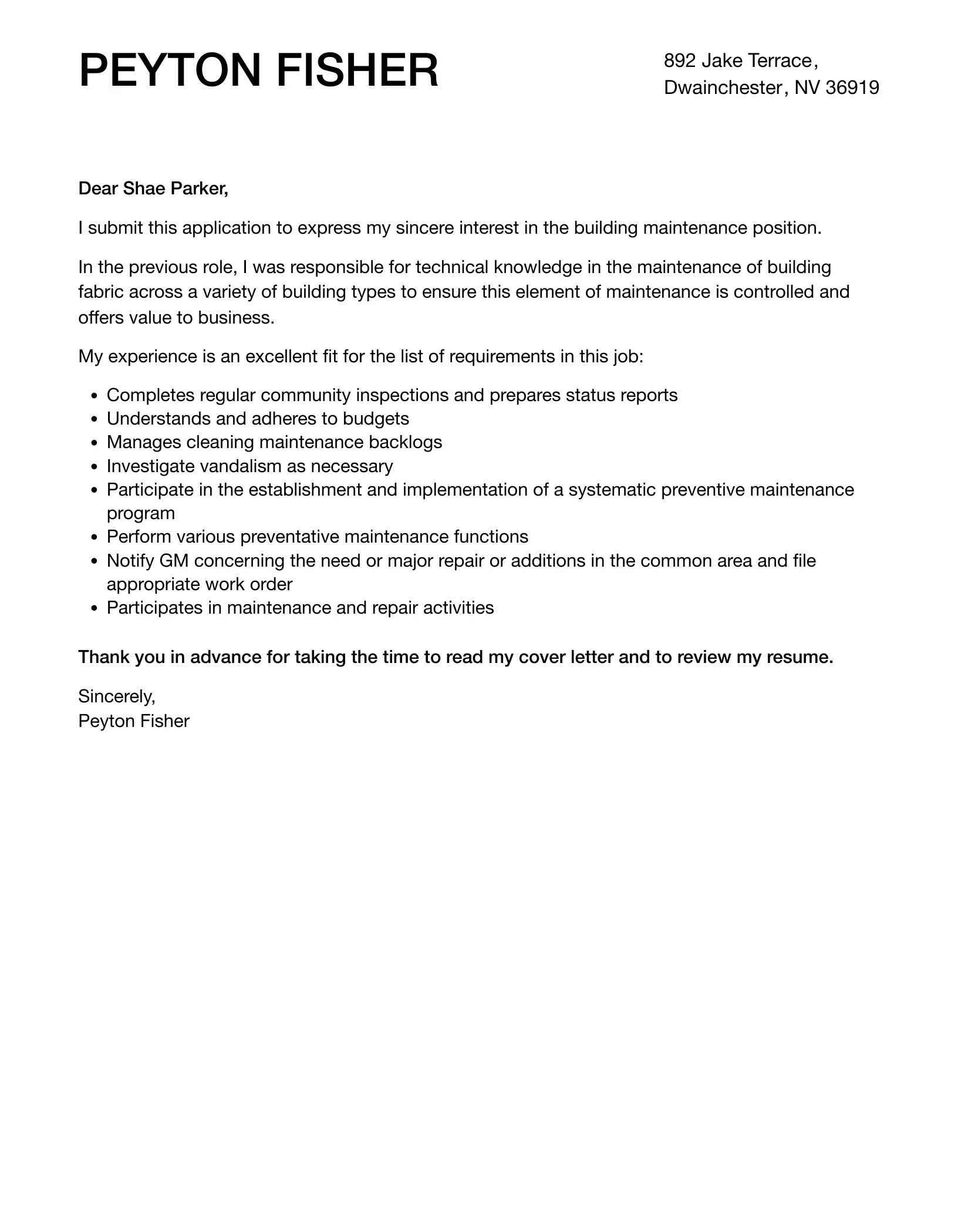
Address your cover letter to a specific person whenever possible. Research the hiring manager’s name and use it in your salutation. A personalized salutation, such as “Dear Mr. Smith,” shows that you have taken the time to research the company and the hiring process. If you can’t find a specific name, use a professional salutation like “Dear Hiring Manager.” Avoid generic greetings like “To Whom It May Concern,” as they can make your letter feel impersonal.
Opening Paragraph: Grabbing Attention
Your opening paragraph should immediately capture the reader’s attention. State the position you are applying for and briefly explain where you found the job posting. Then, highlight your most relevant skills or experience that make you a strong candidate. Show your enthusiasm for the role and the company. This is your chance to make a memorable first impression and encourage the reader to continue reading the rest of your cover letter. Consider including a brief, impactful statement about your career goals and why this role aligns with them.
Highlighting Your Skills and Experience
The body of your cover letter is where you showcase your skills and experience in detail. Tailor this section to the specific requirements listed in the job description. Provide specific examples of your accomplishments and how they align with the company’s needs. Use action verbs to describe your responsibilities and achievements. Quantify your achievements whenever possible (e.g., “Reduced maintenance costs by 15%,” or “Managed a team of 5 technicians”). Demonstrating the practical application of your skills is key to impressing potential employers.
Quantifying Achievements
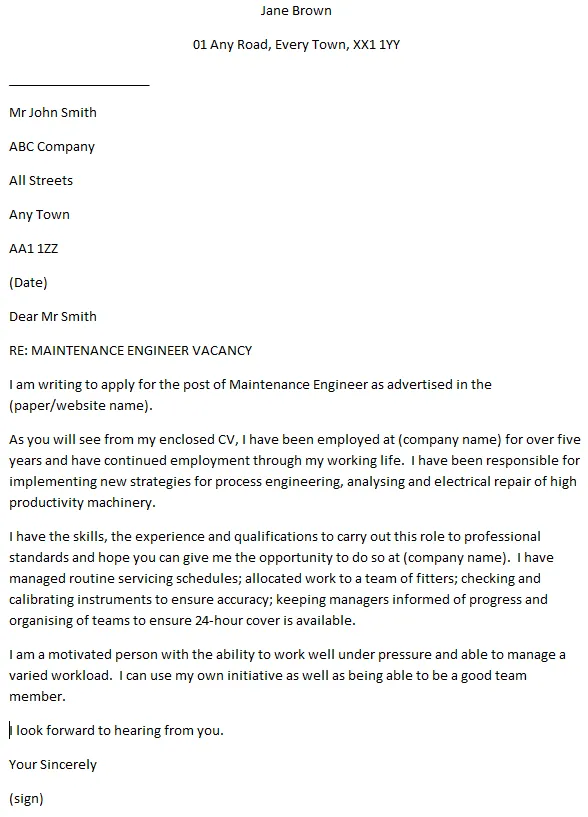
Using numbers and data to support your claims is a powerful way to demonstrate your impact and value. Instead of saying you are ‘good at problem-solving,’ provide specific examples like, ‘Successfully diagnosed and resolved over 50 maintenance issues per month, reducing downtime by 20%.’ Or, if you’ve managed budgets, state the budget size and any cost savings you achieved. Quantifiable achievements make your cover letter more credible and memorable, setting you apart from other candidates. Focus on measurable results that reflect your efficiency, problem-solving skills, and contribution to previous employers.
Addressing the Job Requirements
Carefully review the job description and identify the key requirements. In your cover letter, address each requirement explicitly, providing examples of how your skills and experience meet those needs. Show how your past experiences have prepared you for the role. This demonstrates your understanding of the job requirements and highlights why you are a good fit for the position. Provide evidence of your ability to meet each essential skill or responsibility listed in the job description. This approach makes your letter relevant and tailored to the employer’s expectations.
Expressing Enthusiasm and Fit
Conveying your enthusiasm for the role and the company is crucial. Research the company and its values, and explain why you are interested in working there. Describe how your career goals align with the position and the company’s mission. This enthusiasm shows that you are not just looking for a job, but that you are genuinely interested in contributing to the company’s success. Express your excitement about the opportunity to use your skills and experience to make a positive impact on their team and property.
Closing Your Cover Letter
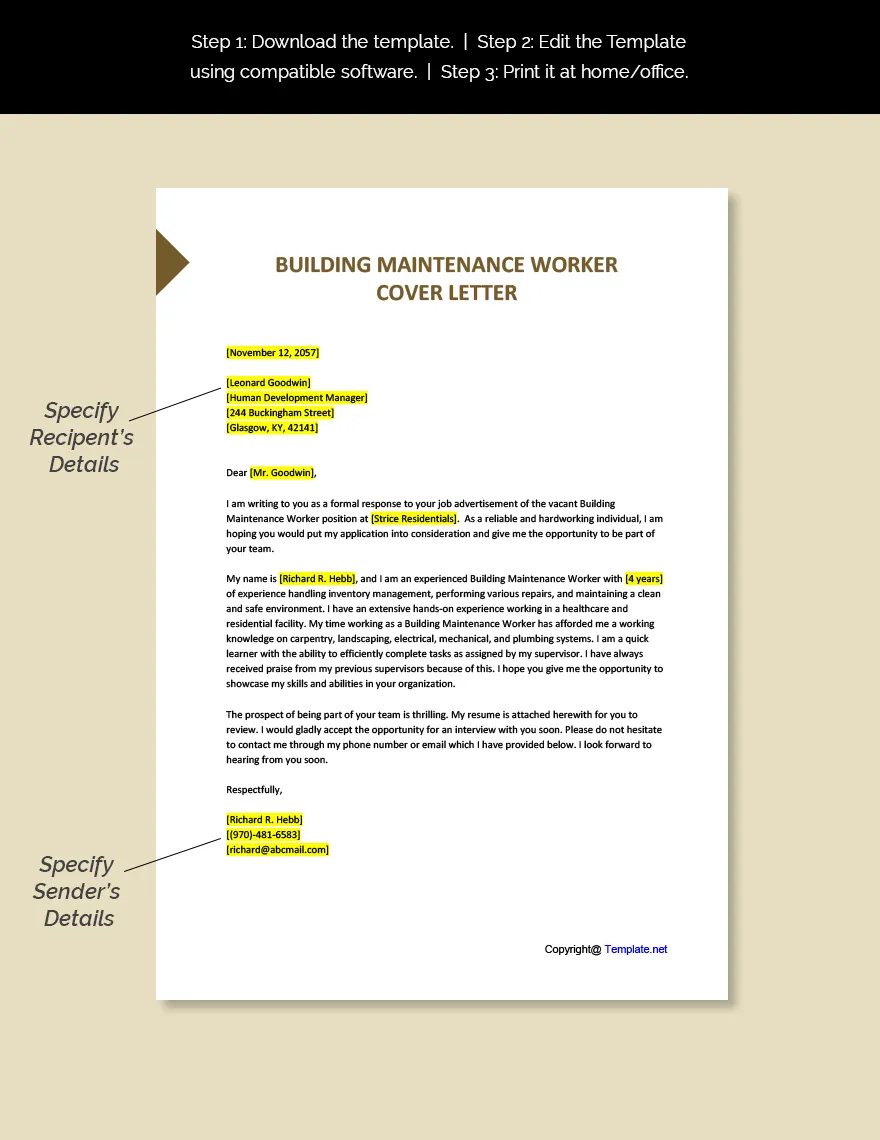
Conclude your cover letter with a strong call to action. Reiterate your interest in the position and express your eagerness to discuss your qualifications further. Thank the hiring manager for their time and consideration. Provide your contact information again, and make it easy for them to reach you. You can also mention your availability for an interview. A confident and professional closing leaves a lasting impression and increases your chances of being contacted.
Proofreading and Formatting
Proofread your cover letter carefully for any grammatical errors, typos, or formatting inconsistencies. Errors can damage your credibility and make a negative impression. Have someone else review your letter to catch any mistakes you might have missed. Use a clear and professional font, and ensure that your letter is well-organized and easy to read. Proper formatting shows attention to detail and professionalism. Ensure consistent spacing, margins, and font size throughout the document.
Building Maintenance Cover Letter Examples
Reviewing examples of building maintenance cover letters can provide you with valuable insights and inspiration. The examples below highlight different approaches depending on experience level and the specific skills being emphasized. Remember to adapt these examples to fit your own qualifications and the requirements of the job you are applying for. Use these as a guide, ensuring your cover letter is tailored, professional, and highlights your unique strengths.
Example 1 Experienced Technician
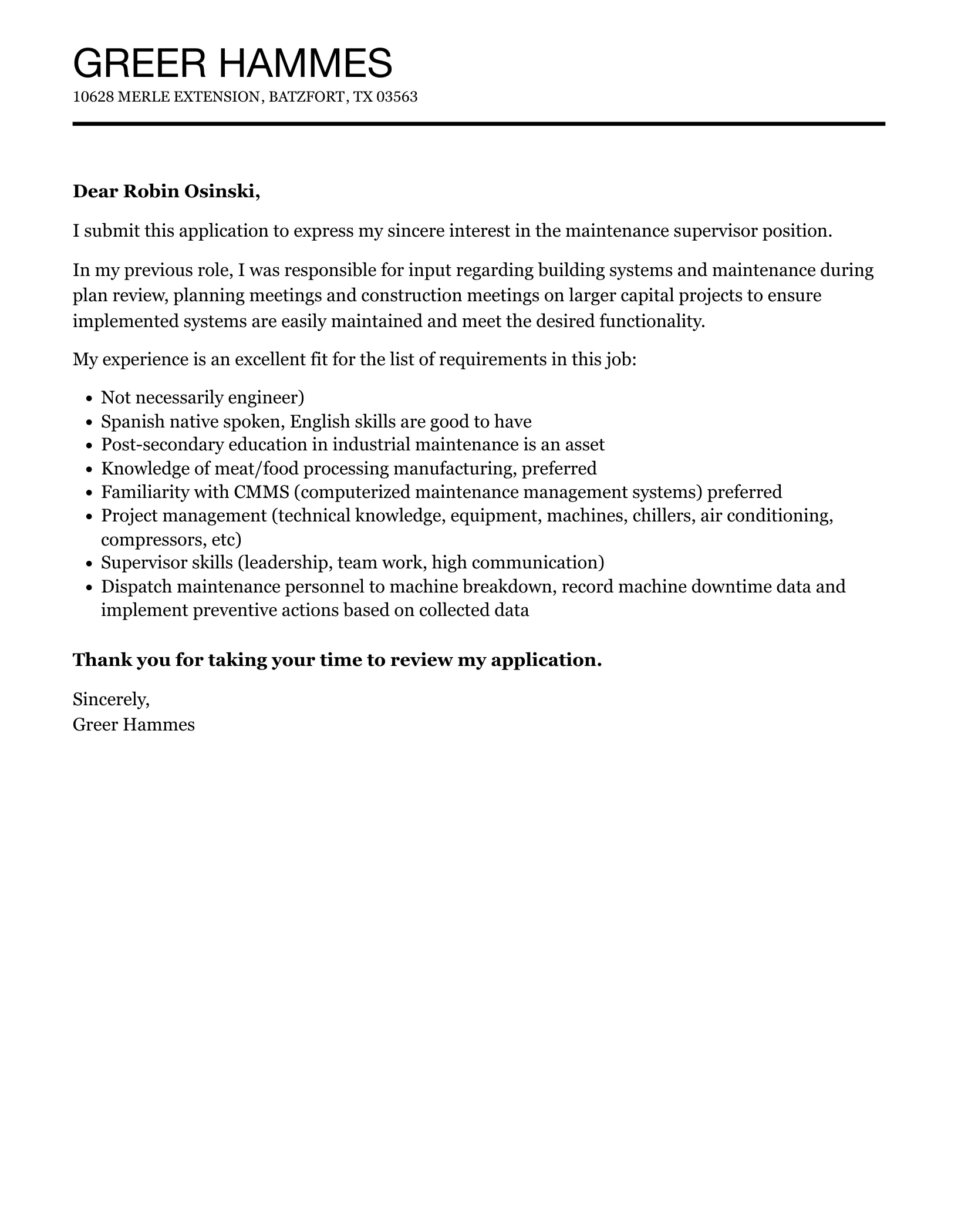
This example is tailored for someone with a substantial background in building maintenance. It focuses on quantifiable achievements and a wide range of skills. It stresses the candidate’s ability to handle complex projects and provide leadership. This example would include phrases like “Successfully managed a portfolio of 10 buildings,” and “Reduced maintenance costs by 18% through proactive maintenance strategies.” It would also showcase a deep understanding of building systems and safety regulations.
Example 2 Entry-Level Applicant
This example focuses on transferable skills and educational background or relevant training. It highlights the candidate’s eagerness to learn and contribute. This example might include statements such as “Completed a building maintenance certification program” or “Proven ability to quickly learn and master new skills in a team environment.” It should emphasize the candidate’s willingness to take on responsibilities and their adaptability.
Example 3 Highlighting Specific Skills
This example is tailored to highlight specific skills that are highly sought after in the job description, such as experience with a particular HVAC system or knowledge of plumbing codes. It emphasizes specific accomplishments related to the required skills. Phrases such as “Expert in the maintenance and repair of Carrier HVAC systems” or “Proficient in diagnosing and fixing complex plumbing issues” would be included. This is ideal for demonstrating a focused expertise that matches the job’s requirements.
Common Mistakes to Avoid
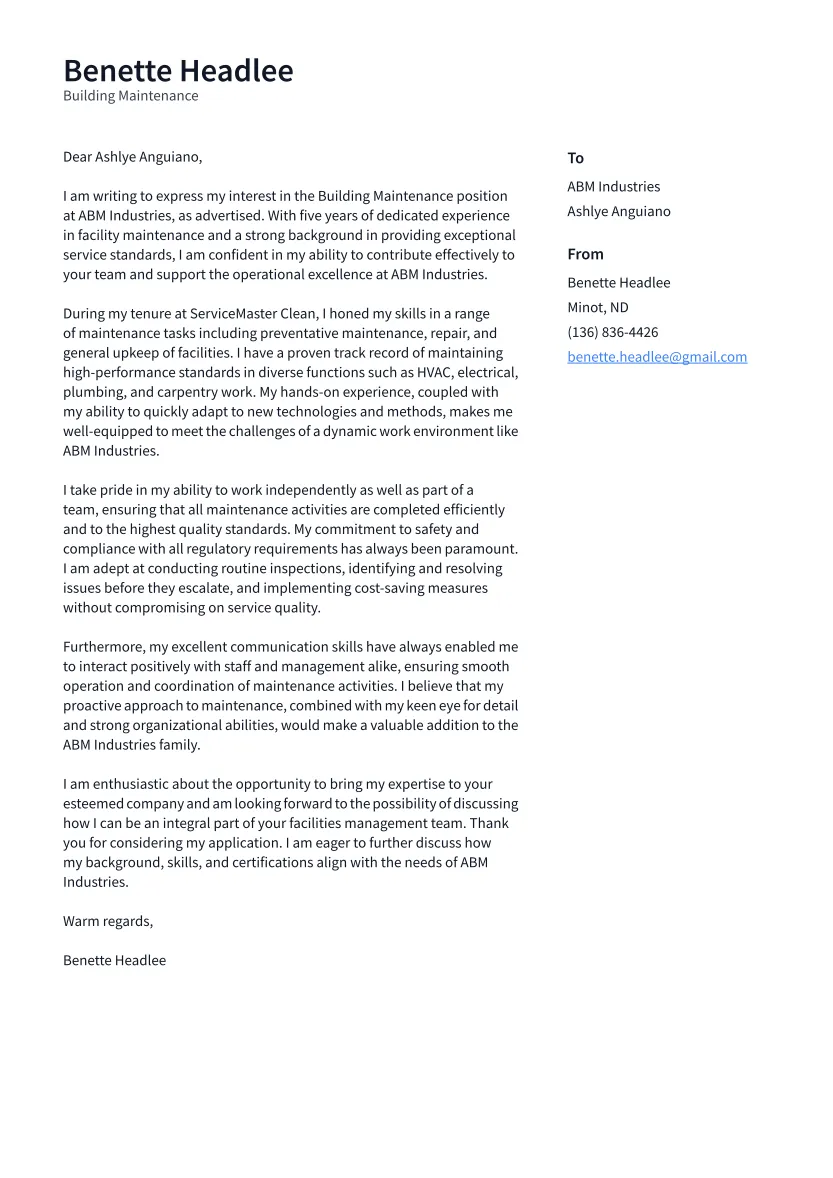
Avoiding common mistakes can significantly improve your chances of making a positive impression. Be mindful of these pitfalls when writing your cover letter to ensure you present yourself in the best possible light. Paying attention to detail can set you apart from other applicants and demonstrate your professionalism.
Generic Letters
Avoid using a generic cover letter that is not tailored to the specific job. Hiring managers can easily spot a generic letter, and it shows a lack of interest in the position. Always customize your cover letter to reflect the specific requirements and the company’s values. Personalize your letter by mentioning the company’s name and the specific job title you are applying for. Generic letters suggest a lack of effort and do not reflect your attention to detail.
Typos and Grammatical Errors
Typos and grammatical errors can undermine your credibility and make you appear unprofessional. Proofread your cover letter carefully before submitting it. Have a friend or family member review it as well. Use grammar and spell-checking tools, but also rely on manual proofreading. A well-written cover letter demonstrates your attention to detail and your commitment to excellence. Always check for errors that could reflect poorly on your candidacy.
Lack of Customization
Failing to tailor your cover letter to the specific job and company is a common mistake. Each cover letter should be unique, highlighting your relevant skills and experiences that match the job requirements. Demonstrate your understanding of the company by researching its values and mission. Show how your qualifications align with their needs. Lack of customization shows a lack of effort and may signal to the hiring manager that you did not take the time to understand the position or the company’s culture.
Ignoring the Job Description
Ignoring the job description is a significant error. The job description provides the specific skills, experiences, and qualifications the employer is looking for. Ensure your cover letter addresses these requirements directly. Use keywords from the job description and provide examples that demonstrate your ability to meet those requirements. Aligning your cover letter with the job description shows that you are a good fit and understand the needs of the role. Ignoring these requirements can lead to your application being overlooked.
Tips for a Successful Job Application
Beyond writing a compelling cover letter, several other steps can increase your chances of success. Consider these additional tips to enhance your job application and improve your overall chances of getting hired. Following these recommendations can create a well-rounded application that presents you as a strong candidate. Combining a well-written cover letter with these strategies can greatly improve your prospects.
- Research the Company: Learn about the company’s mission, values, and recent projects to demonstrate your genuine interest.
- Tailor Your Resume: Customize your resume to match the job description, highlighting the skills and experiences most relevant to the role.
- Network: Reach out to people in your professional network for referrals or insights into the company.
- Prepare for the Interview: Practice common interview questions and prepare examples of your accomplishments.
- Follow Up: Send a thank-you note after the interview and follow up with the hiring manager to express your continued interest.
